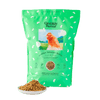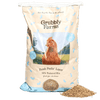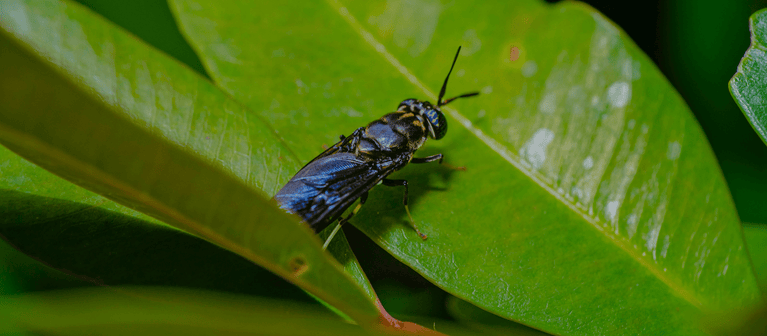
Black Soldier Flies: A gift from nature
The future is bright for the mighty grub: more specifically, the larvae of the black soldier fly (BSF). This small insect has the potential to address several challenges with traditional pet and livestock feed production.
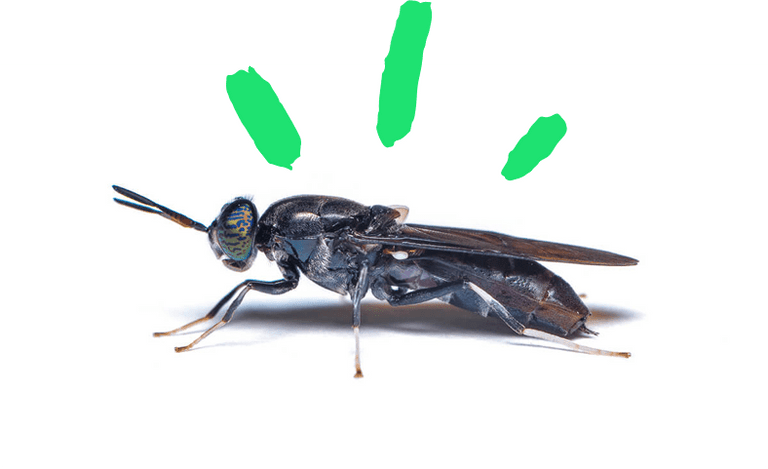
What are Black Soldier Flies?
Black soldier flies (Hermetia illucens) are a species of flies native to North and South America but are now found across the world. They belong to the family Stratiomyidae (containing over 2,700 species). Adult BSF are distinct in appearance for their coloration, which is predominantly black or dark gray—hence the name. However, their bodies may have hints of blue, green, or metallic shades. They are approximately 15 to 20mm (about 0.79 in) in length. No need to swat this fly! They’re not considered a pest--they don’t bite or sting and are not predatory. Instead, the larval form of the black soldier fly is a phenomenal decomposer, breaking down organic substrates and returning nutrients to the soil. The larvae, or grubs, have large appetites and can reasonably adapt their diets based on available organic matter. As a result, the larvae are the desired output in black soldier fly farming.
Why Black Soldier Flies?![]()
What makes black soldier flies so special as a farmable insect and protein source? A few key attributes have garnered attention in the pet food industry.
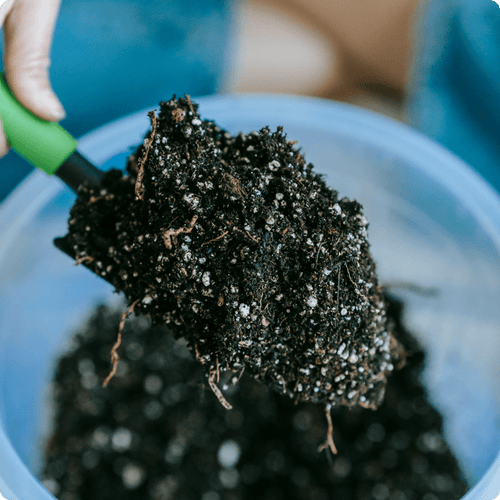
Efficient Conversion
Black soldier fly larvae are exceptionally efficient at converting organic waste into high-quality fertilizer. They can consume a wide range of organic materials, including common food waste, agricultural by-products, and manure. In the case of food waste, this lessens the load on landfills, speeds up cold composting processes when added to your compost bin and provides a healthy addition to animal/pet feeds.
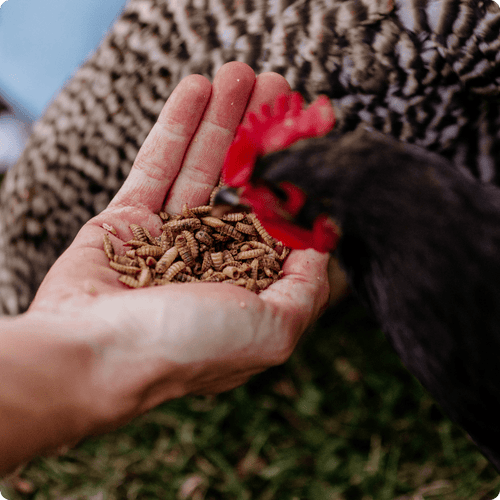
Sustainable Protein Source
As the global demand for animal feed grows, the need for sustainable protein sources increases. Black soldier fly larvae are rich in protein, containing around 40% protein by dry weight, making them an excellent alternative to traditional protein sources like soybean meal and fishmeal. By using black soldier fly larvae as a protein source, the reliance on land-intensive crops and overfishing can be reduced, leading to a more sustainable and environmentally friendly industry.
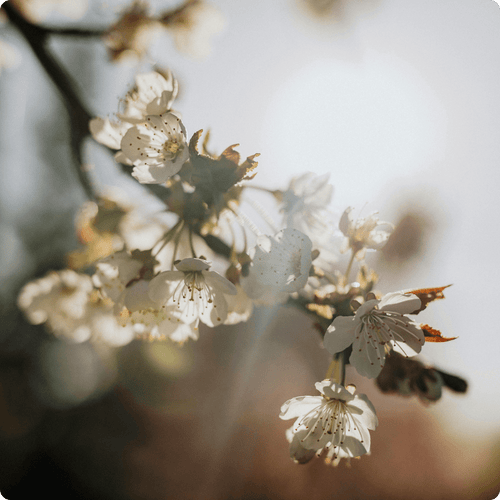
Reduced Environmental Impact
Black soldier fly farming has a significantly lower environmental impact compared to conventional feed production methods. The larvae require minimal water and produce fewer greenhouse gas emissions compared to traditional feed crops. Furthermore, black soldier fly larvae can be farmed intensively, meaning they do not hold the same land-use pressures and deforestation risks as soy or corn crops, making them a more sustainable choice for pet food production.

Improved Animal Health
The protein derived from black soldier fly larvae offers a well-balanced amino acid profile, essential fatty acids, and vitamins, making it a nutritionally valuable feed ingredient. Livestock fed with black soldier fly-based diets have shown similar growth rates (when measuring weight of feed vs. weight increases in livestock). Additionally, the larvae contain beneficial compounds like antimicrobial peptides, which may help reduce the need for antibiotics in animal production. And since foraging for grubs is a natural and instinctive behavior, chickens, reptiles, and other pets don’t need to be convinced to eat grubs—they already love to!
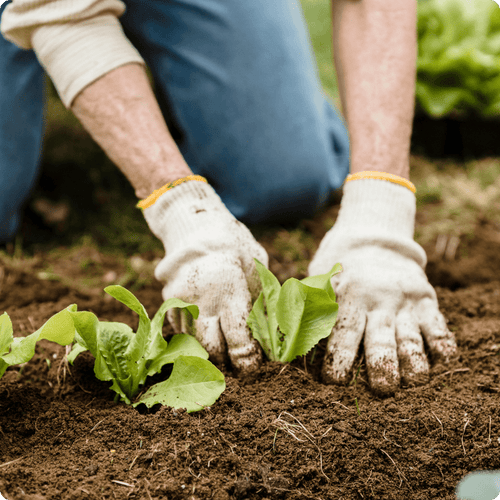
Circular Economy
Black soldier fly farming promotes a circular economy by utilizing organic waste streams as feed inputs. Instead of discarding food waste and agricultural by-products into landfills, it is transformed into valuable protein sources through black soldier fly larvae. This closed-loop system reduces waste, conserves resources, and helps create a more sustainable and circular food system. BSF grubs reduce landfill mass and produce valuable protein for our animals and pets!
The History of Black Soldier Fly Farming![]()
While the benefits of black soldier fly larvae have been known for a long-time, large-scale production was difficult to nail down. According to the Washington Post, entomologists investigated converting manure into protein as early as the 1970s. However, collecting grubs in a natural environment is inefficient, and emulating the right conditions for a complete lifecycle was futile until a breakthrough in 2002, when a reliable indoor reproduction was discovered. With the publication of a 2002 paper by Sheppard, Tomberlin, Joyce, Kiser, & Sumner, the discoveries were disclosed, and blueprint outlined.
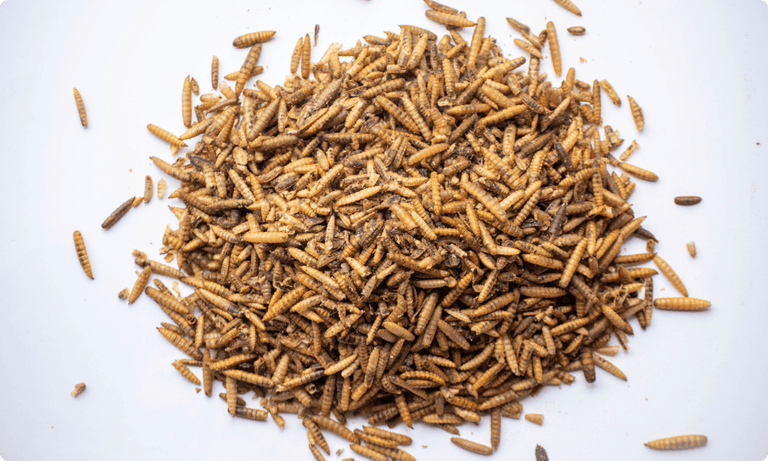
How Black Soldier Fly Farming Works
Black soldier fly farming involves the rearing and cultivation of BSF in a controlled environment. Finding the right combination of temperature, humidity, and lighting at the right stage stimulates flies to breed. Here's a general overview of how the process works:
Breeding & Egg Collection
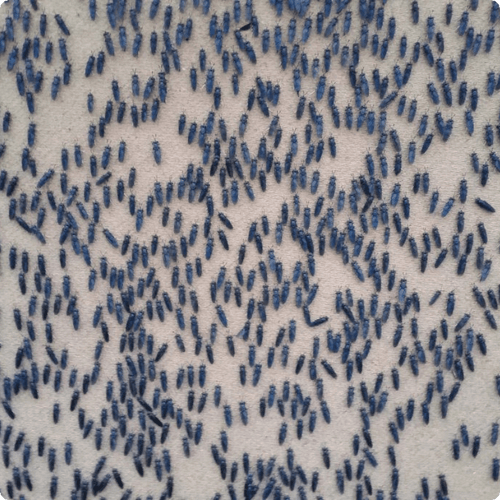
Black soldier flies undergo a four-stage life cycle: egg, larva, pupa, and adult. To start a black soldier fly farm, breeders typically establish a colony of adult black soldier flies. The flies mate, and the female lays eggs in suitable substrate or egg-laying sites (typically corrugated cardboard).
Larvae Rearing
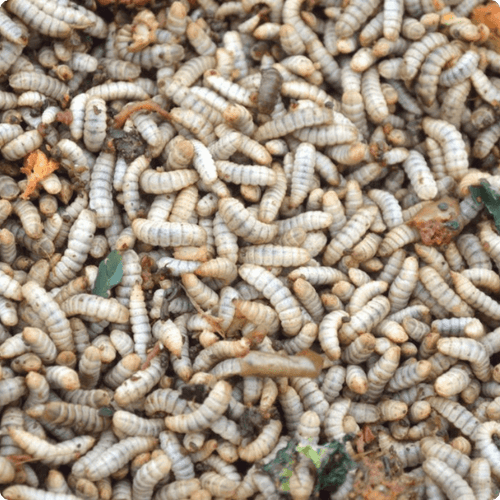
Once the eggs hatch, the larvae emerge. Black soldier fly larvae are voracious eaters and are primarily fed with organic waste materials. They can consume a wide range of organic matter, including fruits, vegetables, food scraps, and agricultural by-products. The larvae are reared in a controlled environment with appropriate temperature, humidity, and substrate conditions.
Harvesting and Separation
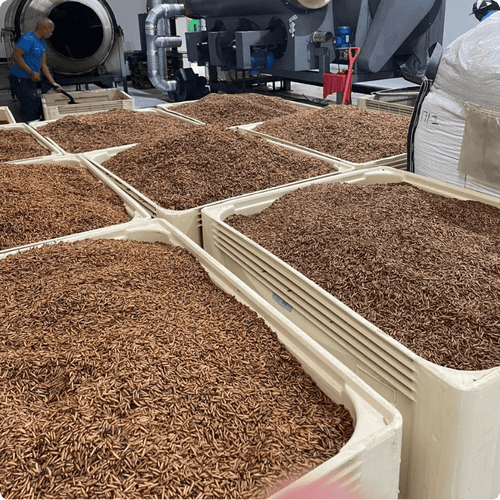
As the black soldier fly larvae grow, they go through several molting stages. Once they reach the desired size or maturity, they are ready for harvest. The larvae can be collected by sieving or using other separation methods to separate them from the substrate or feed material.
Diet

The diet of BSFL matters. Larvae (Grubs) can eat a surprisingly large variety of foods, which may impact how safe the BSFL is for your pet to consume. To ensure no harmful byproducts pass through grubs to your pets, Grubbly Farms grubs are fed in accordance with EU pet food standards, the highest standards in the world.
Life Cycle and Stages of Growth
The life cycle of black soldier flies consists of four stages: egg, larvae, pupae, and adult. After mating, the female flies lay their eggs in a suitable environment rich in organic matter, such as compost piles or animal manure. The eggs hatch into larvae, which go through several molts as they grow and develop. Once they reach the final larval stage, they stop feeding and enter the pupal stage. Inside the pupae, metamorphosis occurs, and eventually, adult flies emerge.
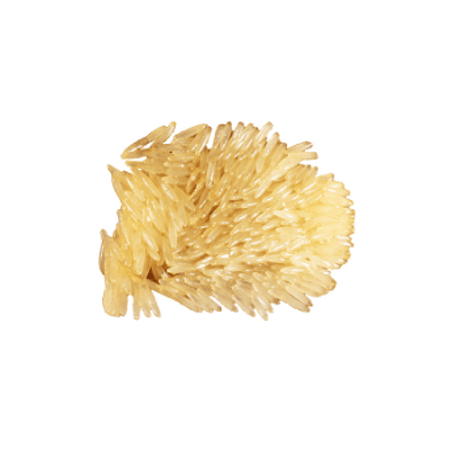
Stage 1
The adult female black soldier flies lay small, creamy-white eggs in clusters of approximately 750 eggs. They are typically elongated and cylindrical in shape and measure about 1 to 2 millimeters (about 0.08 in) in length.
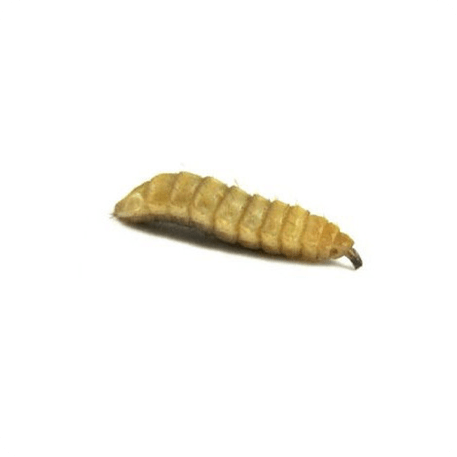
Stage 2
Upon hatching, the larvae emerge from the eggs. The larvae of black soldier flies are often called "grubs" and are the primary focus of black soldier fly farming. They have a cylindrical body shape, ranging in color from brown to black, and measure about 1 to 2 centimeters (about 0.79 in) in length when fully grown. They are known for their ability to consume large quantities of organic waste material, such as fruits, vegetables, and decaying plant matter.

Stage 3
After undergoing several molts, the mature larvae enter the pupal stage. During this stage, the larvae transform into pupae, which are inactive and enclosed within a protective casing called a puparium. Inside the puparium, metamorphosis takes place, leading to the development of adult flies.
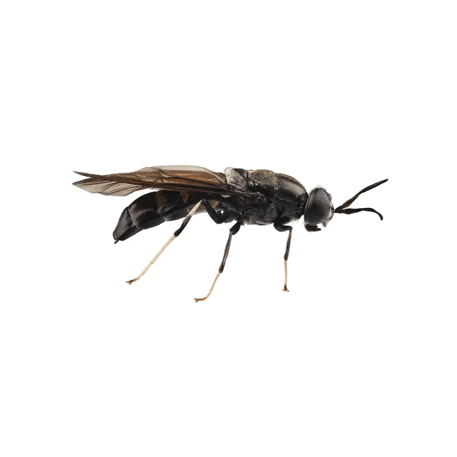
Stage 4
Once the metamorphosis is complete, the adult black soldier flies emerge from the pupae. They have an adult lifespan of up to several weeks when conditions are right, during which their main goal is to mate and reproduce. It’s important to note they do not bite or sting and are not known to transmit diseases to humans or animals.
Uses for Humans & Animals![]()
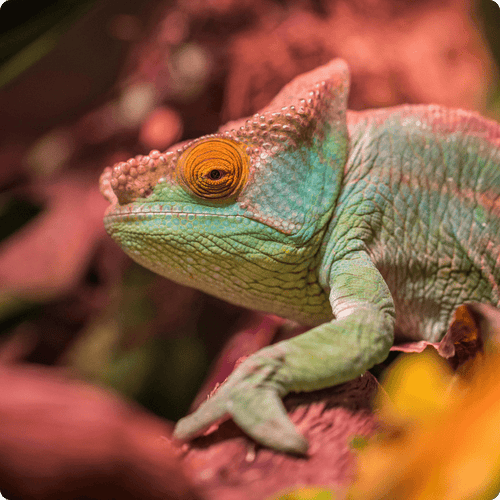
Live Larvae
Live larvae are commonly used for consumption—most commonly, for pet reptiles, amphibians, and other animals with predatory instincts. Live black soldier fly larvae are highly nutritious and offer a balanced profile of essential nutrients.
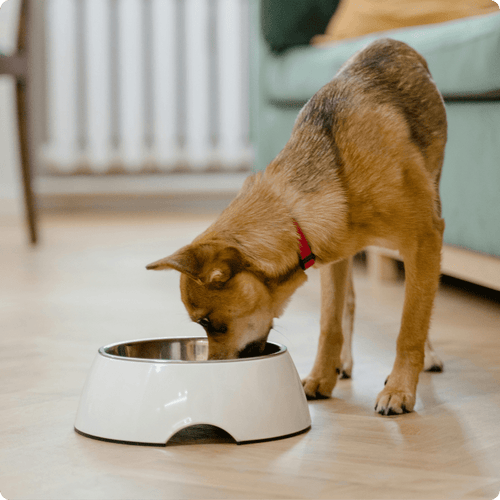
Dried Larvae
Dried black solder fly larvae can be used in pet food, fish feed, poultry and livestock feed.They serve as a highly palatable and nutritious ingredient, providing essential amino acids, vitamins, and minerals. Incorporating black soldier fly larvae into pet food can help enhance the nutritional value, digestibility, and overall quality of the feed.
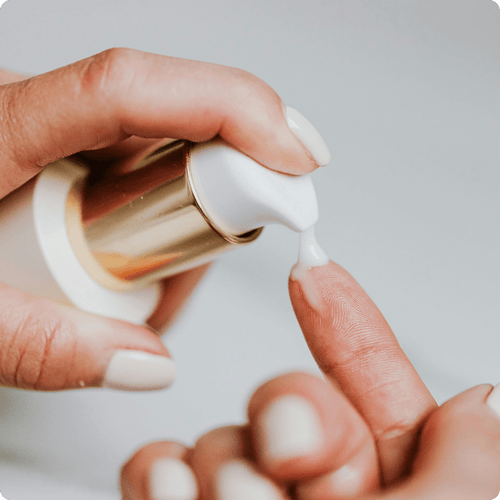
Lipid Oil
Black soldier fly oil is extracted from the larvae of black soldier flies and can be used in a wide variety of applications. Its nutrient-rich profile means it can be applied not just as a feed ingredient for animals, but also in biofuel, pharmaceuticals, and cosmetics innovations.

Frass
The excrement of the BSF, known as frass, is rich in nutrients and other essential elements. These nutrients can be beneficial for plants and can serve as a natural fertilizer. It can also be used as a soil amendment, improving soil structure, moisture retention, and nutrient availability.
Why Farm Black Soldier Flies & Not Different Species?
There are several reasons that make black soldier flies ideal for animal feed and farming, but one word sums it up: efficiency! One of the most fascinating facts about BSFs is their feeding rate. To quote a 2022 study from Seyedalmoosavi, Mielenz, Veldkamp, Das, and Metges:
"In a nutshell, BSFL are incredibly efficient at working together to feed. This leads to a faster lifecycle; larvae reach their nutritional needs quicker than other species before advancing into the pupae, and then adult stages. Reproduction happens faster than other species, leading to more larvae in a shorter time. BSFL has a nutrient and protein profile that aligns well with poultry needs. It’s often compared against another common protein source used in animal feeds: mealworms.
A unique feature of BSFL is the rapid feeding rate, for which there are specific behavioral mechanisms. For example, a group of larvae moves in a coordinated manner to form fountains around the feed, into which new larvae crawl from below and are pumped out at the top, making the feed accessible to all larvae in the group in a time-efficient way. This behavior is particularly important when the amount of available feed is limited and is supported by their comparatively hard structure of the mouth apparatus containing 0.49% calcium which has been referred to as a LINK 'tunnel boring machine' "that aids in exploration and crushing of the feeding substrate. “
Black Soldier Flies vs Mealworms
In a nutshell, BSFL are incredibly efficient at working together to feed. This leads to a faster lifecycle; larvae reach their nutritional needs quicker than other species before advancing into the pupae, and then adult stages. Reproduction happens faster than other species, leading to more larvae in a shorter time. BSFL has a nutrient and protein profile that aligns well with poultry needs. It’s often compared against another common protein source used in animal feeds: mealworms.

While both are an adequate protein source, black soldier fly larvae offer a wide range & more balanced essential amino acid profile compared to mealworms—most notably calcium, phosphorus, methionine, and lysine. This is important because it ensures that chickens receive all the necessary building blocks for various physiological processes, for a healthier and happier bird. The calcium-to-phosphorus ratio is important because both are necessary for each to be metabolized. BSF grubs have an ideal calcium-to-phosphorus ratio, supporting optimal mineral absorption. Mealworms, on the other hand, tend to have a higher phosphorus content, which may require additional calcium supplementation in the diet. Calcium is an essential mineral for chickens, especially egg layers. Besides being crucial for aiding in the production of strong eggshells (which are 90% calcium), its role does not end there.
Calcium ensures proper bone growth and development, triggers hormone production for a healthy reproductive system, activates enzymes in the gut, and helps control muscle spasms. Also aiding in the absorption of calcium, among other key benefits, is lysine, with 72% more than mealworms. Lysine’s main function is to participate in protein synthesis, which helps chickens produce antibodies, hormones, and enzymes that boost the immune system. Black soldier fly larvae also have more than 2x the natural occurring methionine than mealworms. Methionine boosts muscle development, feather growth, and egg production.
How to Spot Quality Black Solider Fly Larva

Quality grubs cannot be discerned by appearance. Because grubs are not fussy eaters, their quality is characterized by their diet, which can impact their nutritional content. When purchasing grubs, look for transparency in harvesting standards and traceable sourcing. Grubbly Farms grubs consume a diet of pre-consumer fruits, veggies, and grains from farms, restaurants, and grocery stores to food processing plants that would otherwise end up in landfills. We also offer full traceability and transparency in our sourcing.
About Grubbly Farms
We're passionate about the nutritional components and sustainable qualities of the black soldier fly. That's why we've crafted a line of grub-based feed and treats for chickens and flocks. When it comes to caring for your pets, we don't believe you should have to choose between nurturing them or the planet. With BSF grubs, you can do both!
